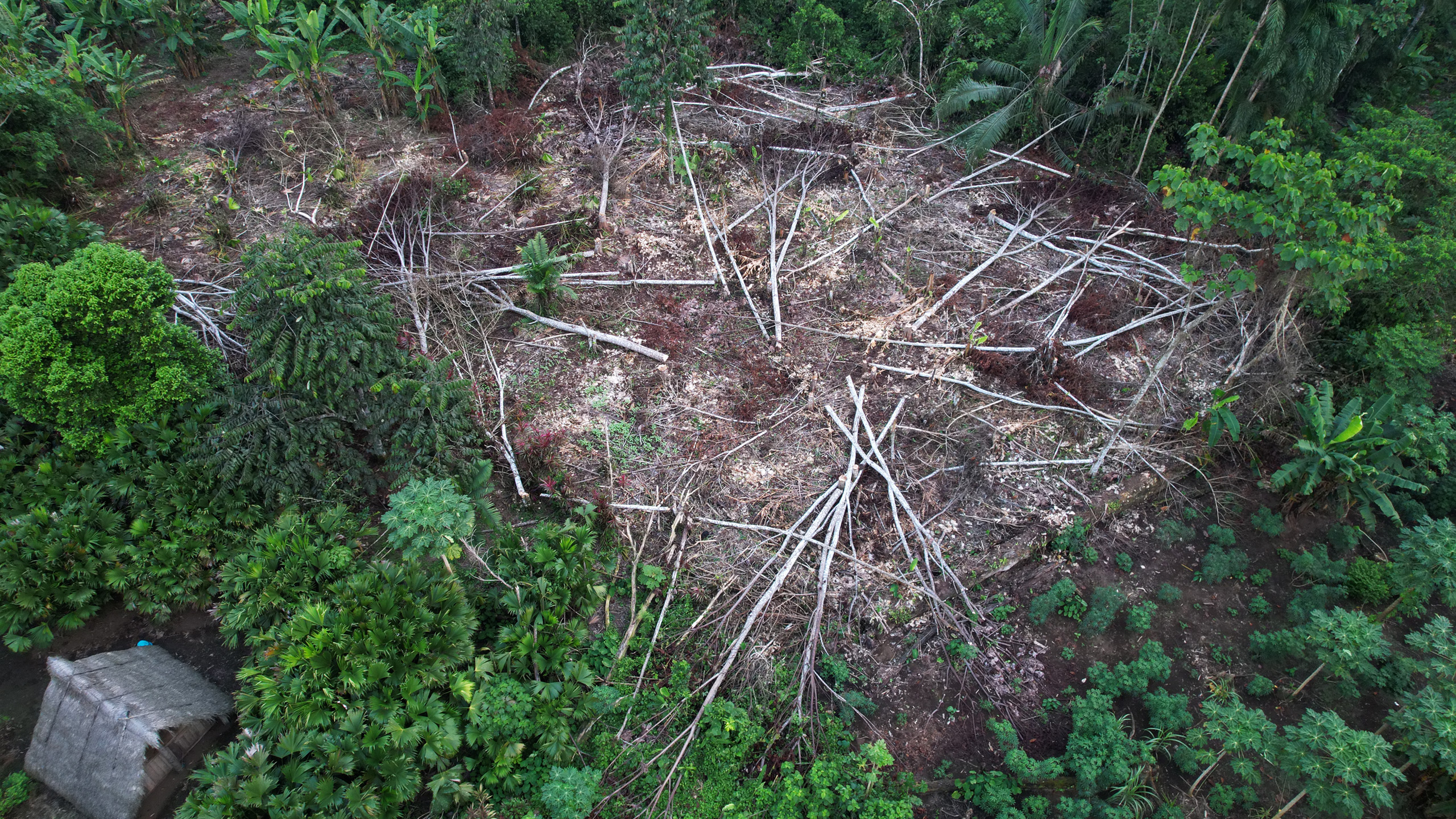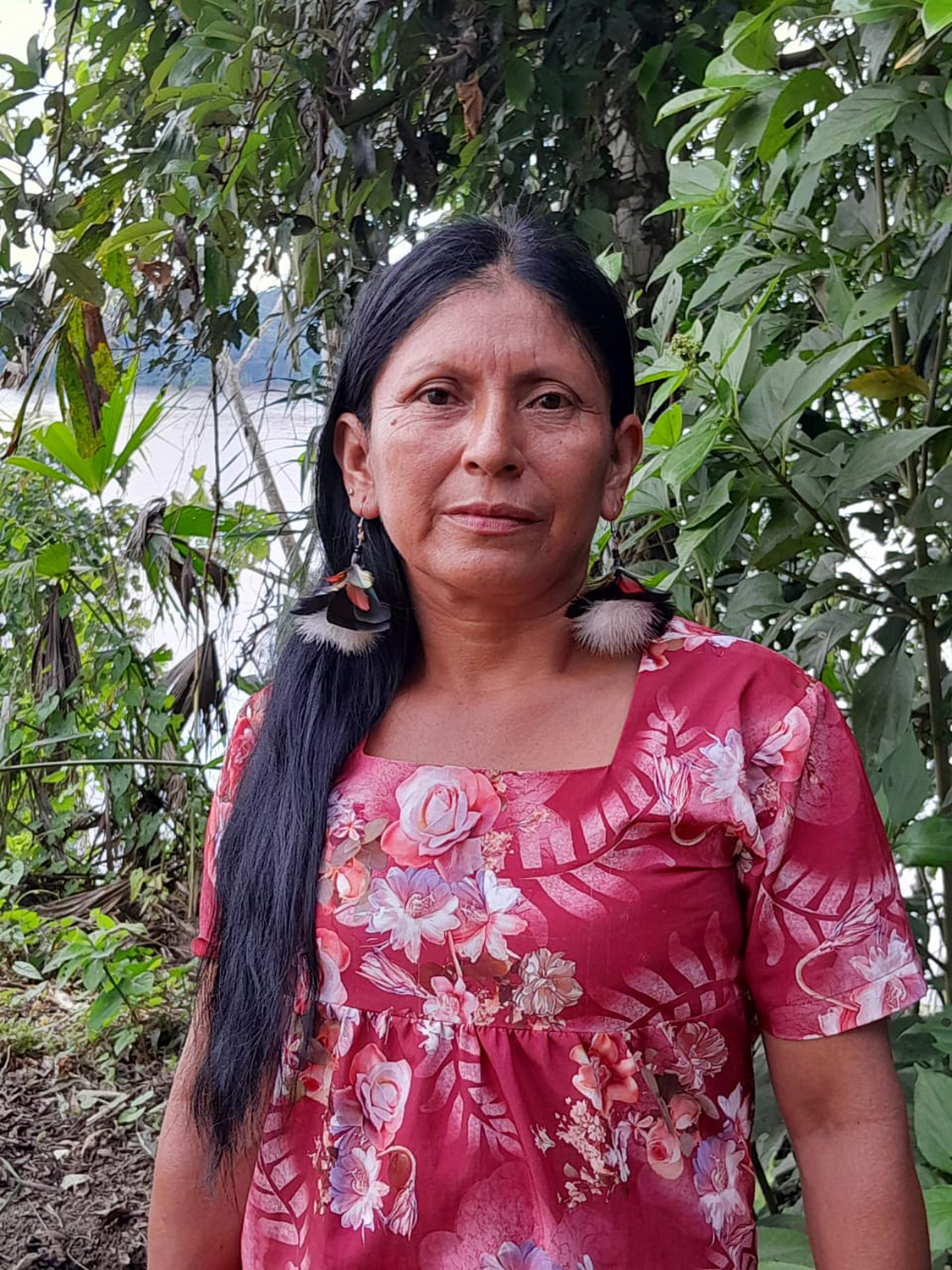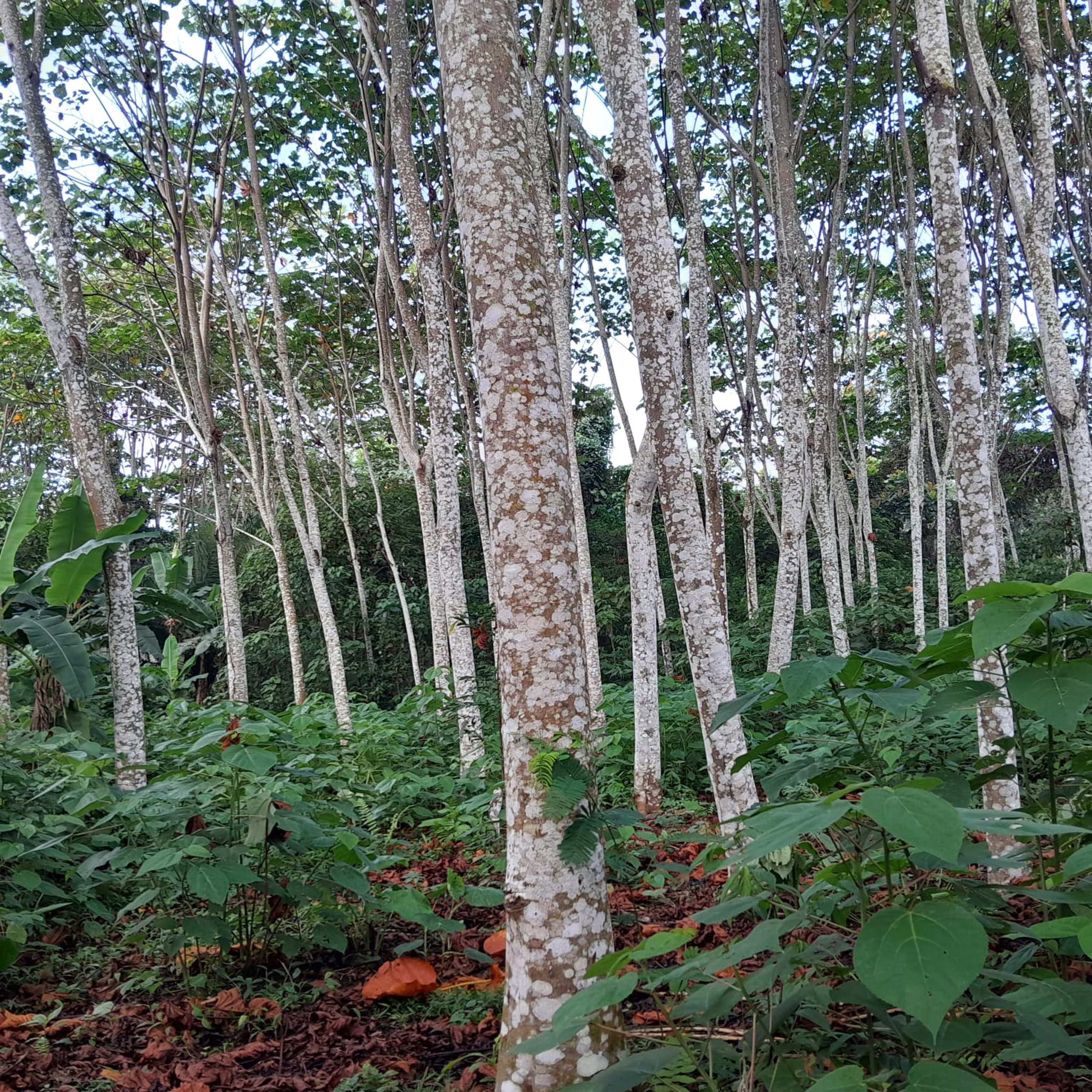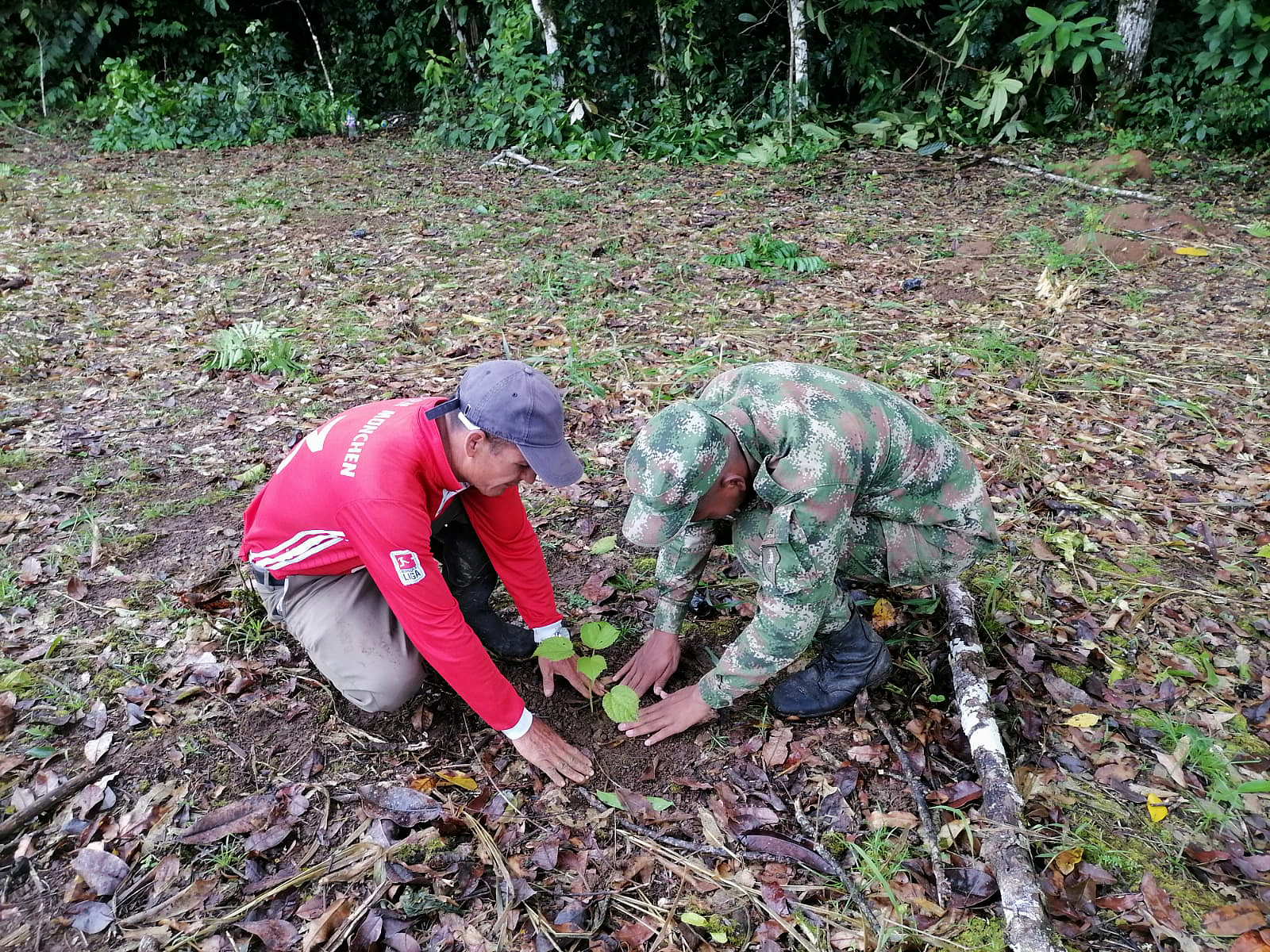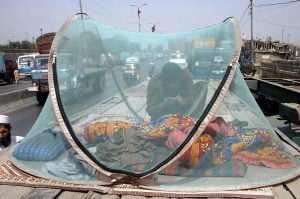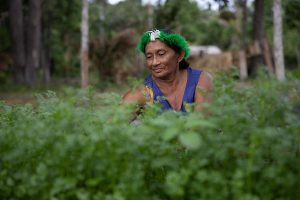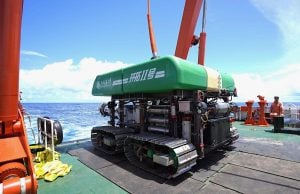A group of young Indigenous Achuar are installing cameras, flying drones to 1,000 metres, capturing hundreds of photographs and videos, and mapping vulnerable spots along the Pastaza River, which flows through the heart of the Ecuadorian Amazon into neighbouring Peru. They are Los Lanceros Digitales – “the digital lancers” – who keep watch over this area, aiming to prevent loggers from returning in search of balsa trees.
“So far we haven’t found any loggers,” explains Roberto Peas, the deputy coordinator of the group, an initiative of the Confederation of Indigenous Nationalities of the Ecuadorian Amazon. “They know that everything is under surveillance.”
This is a new way for Indigenous groups to exercise authority over this corner of the Amazon, and comes after the region experienced one of the harshest episodes in its recent history: the so-called “balsa fever”. In the past decade, Ecuador has emerged as the world’s top exporter of balsa (Ochroma pyramidale), with the majority of wood shipments making their way to China – where it is used, somewhat paradoxically, to build wind turbines for the transition to greener energy systems.
In 2020, the “fever” for the logging of this fast-growing tree, which can reach heights of 30 metres and nearly two metres in diameter, spread across the country, from Ecuador’s coastal regions into the Amazon. In a communiqué shared with Dialogue Earth and Red Prensa Verde, the Ministry of Environment, Water and Ecological Transition (MAATE) pointed to several factors that drove the surge in felling, highlighting, among others, the Chinese government’s continued provision of subsidies to its wind industry and manufacturers, and balsa’s emergence as a potential source of income for Indigenous communities hit hard by the Covid-19 pandemic.
As the country faced the pandemic and scientists strove to develop vaccines, loggers travelled up the Pastaza River to Sharamentsa, an Achuar community of more than 7,500 inhabitants, close to the Peruvian border. “Nobody was prepared to sell balsa,” says Tiyua Uyunkar, from the Achuar Nation of Ecuador, explaining that there was no existing cultivation of the tree in the area. Although Achuar communities broadly opposed such business, some members cut down trees for the middlemen. “This generated discrepancies between those who wanted to sell and those who preferred to preserve them.”
Later, primary forests were cut down in order to grow balsa for sale, says Rosa Mercedes Vargas Illanes, the leader of Sharamentsa. According to the MAATE communiqué, this pattern was repeated in other communities. Unlike other species, balsa only takes three years to be ready for its first cut.
Four years later, the Achuar say that this rush for balsa left only grief. But the business continues. Two hours from the community, our reporters found hundreds of logs on the ground and 15 loaded boats bound for the port of Manta, on the country’s central coast.
For Uyunkar Domingo Peas, president of Cuencas Sagradas (Sacred Basins), an alliance of Indigenous organisations and NGOs working in Ecuador and Peru, the worst consequence was the social rupture caused by the rush: “Many were cheated, underpaid. Or they misused the money, they were sold beer, they brought prostitutes, creating a social problem.”
Various sources confirmed that, at the time of the rush, an average balsa “leg”, as cut trees are dubbed, was worth USD 40. One source reported that middlemen regularly paid less than half of this, citing one example where a group was paid USD 5,000 for 280 “legs”, less than half of the USD 11,200 they could have been worth. Waorani and Kichwa tribes were also cheated in this way, according to WWF.
Another impact of these incursions was gender-based violence, reportedly perpetrated by the loggers. “There was a lot of abuse, they even ‘married’ some young women and left them pregnant,” says Andrea Wampach Vargas, president of the Association of Indigenous Women of Pastaza and Morona Santiago. “We were afraid.”
Since 2022, the Achuar nation has sanctioned community members who sell balsa, according to the Sharam Project, an initiative funded by international organisations such as Fundación Pachamama and Amazon Conservation Team. Now, loggers must request permission and replant 10 trees for each cut down. In addition, respect for the nation’s women has reportedly been stipulated as the first condition for buying balsa. But Wampach still expresses concern that the violence will not stop, especially for those who live near the road where wood is still sold illegally. “Those men are still there,” she warns.
Balsa fever reaches Peru
In 2020, Ecuadorian loggers crossed just over the border into north-eastern Peru to raid the Wampís Indigenous territory. More than 1.5 million cubic feet of balsa, which was growing in their forests, were estimated to have been illegally logged, according to the autonomous government of the Wampís nation.
“The balsa brought us many disputes and threats,” recalls Teófilo Kukush, the highest authority of the Wampís nation, which is made up of 22 communities along the Santiago and Morona rivers that cut through this part of the Peruvian Amazon. “The state’s inaction didn’t help either,” he adds.
Despite reprisals from loggers, the Wampís ordered a stop to all logging and blocked boats from accessing their territory. “We managed to stop these disputes,” says Kukush. “To this day they have not returned.”
The Ecuadorian industry discovered how easy it was to take Peruvian balsa, in a forestry industry that struggles with falsified documents, unverified information and corruptionAlfredo Rodríguez, Peruvian forestry specialist
During 2020 and 2021, balsa – known locally as topa – was one of the five most exported timber species in Peru, according to Forest Trends. Over the two years, 44,855 cubic metres of the wood were exported, according to data from national customs agency Sunat. In 2021, almost all of the balsa wood (97%) was shipped to Ecuador, where it is processed into panels and blocks on its way to the Chinese market.
Alfredo Rodríguez, a Peruvian forestry specialist and co-author of the Forest Trends report, points out that practically all illegal timber found a way to be traded. In 2021, 13,393 cubic metres of licensed production of balsa logs and sawn timber was produced, according to data requested from the National Forestry and Wildlife Service (Serfor) – but far more than this was exported.
“The Ecuadorian industry discovered how easy it was to take Peruvian balsa, in a forestry industry that struggles with falsified documents, unverified information and corruption,” he says.
Since 2016, balsa plantations have been registered under the guidance of Serfor. But this does not account for its growth usually occurring in deforested areas of secondary forest, rather than dedicated plantations. “Under this modality, they take a truck from a supposed plantation and bring in wood from all the communities, whether they are registered or not,” says Rodríguez.
Currently, there are 875 plantations with the potential to collectively produce 371,866 cubic metres of balsa wood, according to Serfor. “It is a simple and automatic register,” explains independent forestry expert Frank Rivero. He adds that forest management plans or extraction permits are not verified and are not required, nor can the Forestry and Wildlife Resources Oversight Agency (Osinfor) inspect these plantations. Only when a forest is going to be harvested can there be an inspection, but it is not mandatory.
“Serfor should correct the regulations on the registration and use of forestry plantations,” says Rivero. “Many times the balsa is illegally extracted from unauthorised areas and laundered with plantation registers.”
This happened in 2021, the peak year of balsa exports, during which a record area of planting was recorded. Jalsuri Green S.A.C., a fictitious company belonging to an organised crime group dubbed “The Topa Clan”, was responsible for almost 50% of the balsa exported from the country, analysis of Sunat data found. According to the public prosecutor’s office, the group reportedly set up the company in 2020 with the support of former officials of the environmental authority of the Amazonian region of San Martín, managing to secure falsified documents to enable them to exploit balsa.
Since then, exports have decreased. In 2022, only 12,778 cubic metres were shipped from Peru, 60% less than in 2021. In addition, in 2023, Serfor approved guidelines for logging in secondary forests, which outline that areas where wild balsa wood grows will now require supervision by Osinfor and cannot be treated as plantations.
Serfor was approached for comment on the trafficking of balsa wood and plantations, but at the time of publication, no response had been received.
After the balsa fever, the Wampís nation has opted to reforest areas with the species in order to market it in a sustainable way. “We are looking for a direct market with China,” says Teofilo Kukush. “But so far we haven’t found a company that will pay a fair price.”
Coca swapped for balsa in Colombia
Around the same time as the “balsa fever” in Ecuador and Peru, word of this wood reached Maximino Morales, a Colombian farmer in La Carmelita, in the south-western department of Putumayo, near the borders with both Ecuador and Peru. Previously, the 50-year-old farmer planted coca in this Amazonian village, long affected by armed conflict and illicit crops.
Intrigued, Morales travelled to Ecuador to learn about the “balso” business, as it is called in Colombia. He then sent his sons to work in the industry, who returned with the contact of an Ecuadorian company. “It was a boom,” he says. “Each truck loaded 12 cubic metres of balsa wood slats, which we sold for USD 10,500. One hectare generated three lorries – or USD 31,000.”
Morales currently has 12 hectares of balsa planted, five of which are thanks to “green credits” granted by REM Visión Amazonía, a government initiative that aims to reduce deforestation in Colombia’s Amazon. In total, 60 producers in the area have benefited from this programme, which is managed by the Ministry of the Environment and financed by government agencies from Germany, Norway and the United Kingdom.
“The farmers told us that wood from the forests was being used, and that is why many people wanted to plant, so we promoted the credit,” explains Yezid Beltrán, leader of the organisation’s agro-environmental development department. The project provides farmers with financing of up to USD 6,300 and can offer further grants of up to 50% of the value of each loan disbursed, as well as technical assistance. This incentive is conditional on a conservation agreement.
“The balso has been a blessing,” says Morales, who was the first producer to be granted a loan. “Not even in the time of illicit crops did coca awaken me to cultivate so much.”
However, Morales recalls that there is still a lack of comprehensive assistance for farmers who want to stop growing coca. Nor is there sufficient interest from some entities in balso as an alternative to illicit crops, he explains.
“At the moment, coca is useless,” he says, describing how credit schemes for balso have made gains in dissuading some producers from opting for the illicit crop. “But in the future, if we don’t bet on balso, people will continue with coca. It’s in the government’s hands, it’s a very big and long-term issue for the Amazon.”
This story was produced with support from Earth Journalism Network.

